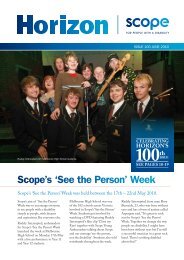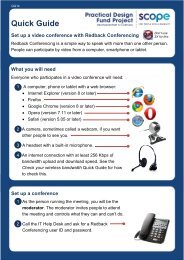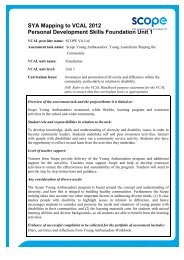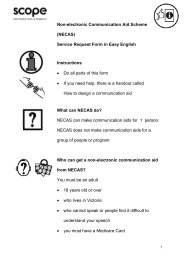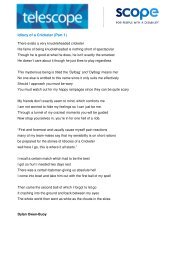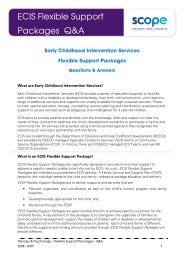Positive behaviour support Getting it right from the start
Positive behaviour support Getting it right from the start
Positive behaviour support Getting it right from the start
Create successful ePaper yourself
Turn your PDF publications into a flip-book with our unique Google optimized e-Paper software.
<strong>Pos<strong>it</strong>ive</strong> <strong>behaviour</strong> <strong>support</strong>: <strong>Getting</strong> <strong>it</strong> <strong>right</strong> <strong>from</strong> <strong>the</strong> <strong>start</strong> - Facil<strong>it</strong>ators reference manual 41<br />
PowerPoint 58<br />
*<br />
Communication<br />
Communication is about two or more people sharing a message. It is <strong>the</strong> exchange of<br />
information, thoughts and opinions between people. Communication may involve <strong>the</strong> use of<br />
conventional or unconventional signals and may occur by spoken and non-spoken modes.<br />
Communication is a very complex activ<strong>it</strong>y, w<strong>it</strong>h two major processes:<br />
• Expressive communication – The sending of a message<br />
• Receptive communication – The receiving and interpreting of a message<br />
Below is a simplified diagram of what happens when two people communicate<br />
a message. 7<br />
MESSAGE<br />
Sender<br />
Receiver<br />
I like ice<br />
cream!<br />
She likes<br />
ice cream.<br />
Chocolate<br />
is my...<br />
So Do I! Chocolate<br />
is my favour<strong>it</strong>e!<br />
What is...<br />
Environment<br />
Receiver<br />
Sender<br />
MESSAGE<br />
PowerPoint 59<br />
*<br />
The diagram above shows in a simplified way an example of a successful interaction. The<br />
two-way process of communication is not always successful and not always that simple.<br />
Complex communication needs 8<br />
People who are unable to communicate effectively using speech alone may benef<strong>it</strong> <strong>from</strong> using<br />
augmentative or alternative communication (AAC) systems e<strong>it</strong>her temporarily or permanently.<br />
Hearing lim<strong>it</strong>ation should not be considered <strong>the</strong> primary cause of complex communication needs.<br />
Many people w<strong>it</strong>h a disabil<strong>it</strong>y have complex communication needs. Often a significant proportion<br />
will show <strong>behaviour</strong>s of concern as <strong>the</strong>y are unable to effectively use speech or <strong>the</strong> attempts<br />
<strong>the</strong>y make to communicate are difficult for <strong>the</strong>ir communication partners to understand. This is<br />
particularly true for people who find <strong>the</strong> usual methods of communication difficult or impossible.<br />
7. Diagram modified <strong>from</strong> Disabil<strong>it</strong>y Services Queensland Certificate III workbook.<br />
8. Disabil<strong>it</strong>y Services Division defin<strong>it</strong>ion following feedback provided by people w<strong>it</strong>h disabil<strong>it</strong>ies who participated<br />
in <strong>the</strong> commun<strong>it</strong>y consultations on complex communication needs, September 2000.



